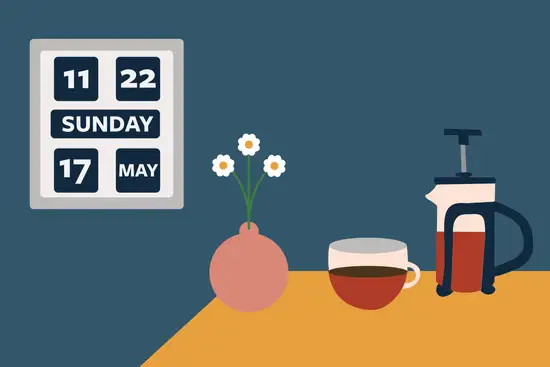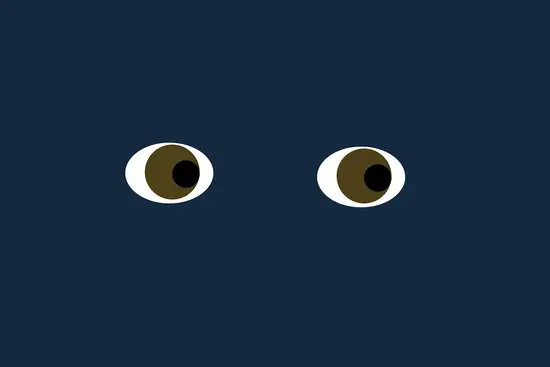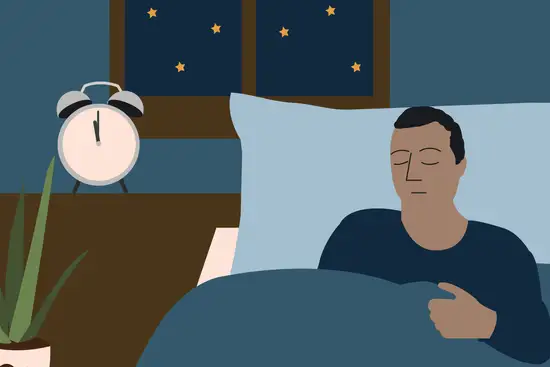Key points
Most of us nap from time to time, especially when we’re running low on sleep from the night before. While the occasional nap is unlikely to cause problems, having a daily midday snooze could actually be doing you more harm than good.
In this article, we’ll cover everything you need to know about napping, including:
- what is napping?
- the pros and cons of naps
- ways to have the perfect nap
- how to stop napping if it’s impacting your nights
- what to do if napping is affecting your sleep.
What are naps?
If you haven’t slept well the night before or you’re looking to beat the midday slump, you might look to napping for the boost you need to get through your day. And you’re not alone — around 38% of adults report sometimes enjoying a nap during the day.1
But what’s the difference between a nap and a regular sleep?
A nap is a short sleep that’s taken outside of your normal sleep time — which for most of us means during the day. It’s generally agreed that being asleep for two hours or less can be called napping.
Research has shown the many benefits that sleeping has for both your physical and mental health. It can improve your mood, help your memory, support your immune system and keep your heart healthy.2 3 4 5
So if napping can be so beneficial, shouldn’t we all be fitting them into our routines?
Not necessarily. While napping can have its benefits, if you have trouble sleeping at night, it could actually be making your overall sleep quality worse. But before we dive into this, let’s take a look at the health benefits of napping.
Needing to nap regularly could be the sign of a sleeping problem
If you often need a nap to feel awake enough to get through the day, you might have an underlying issue with your sleep. By getting to the root cause of your sleep problem you can feel full of energy through the day, without needing to rely on a nap.
Join the thousands of people who have achieved better sleep with Sleepstation’s clinically validated sleep programme.
- Proven to be more effective than sleeping pills
- Personal access to sleep coaches
- Clinically validated and accredited by the NHS
- Personalised sleep improvement plan
Are naps good for you?
As long as you’re napping for the optimum amount of time then they definitely can be. Research has shown that napping can lead to improvement in:
Studies have also shown that people who regularly nap once or twice a week tend to have a lower risk of heart disease than those who just have the occasional nap or don’t nap at all.8 More research is needed to tell us whether the length, as well as frequency of our naps affect heart health.
And if you’re looking to beat the afternoon fatigue, well-timed naps can be great for giving you an energy boost to power through the day.
Benefits of napping
Napping can be a way of taking a break in your day and recharge. It can leave you feeling more alert and refreshed and some studies have shown a number of health benefits to napping.
When you take a nap you can benefit from a boost in brain power immediately upon waking, which can last for up to three hours. It can also greatly improve your memory and problem-solving skills.6
So when you’re having a stressful or unproductive day at work, it may be worth finding time in your break to take a short nap and recharge your brain. But don’t forget to set your alarm — you don’t want to wake up having missed the rest of your work day!
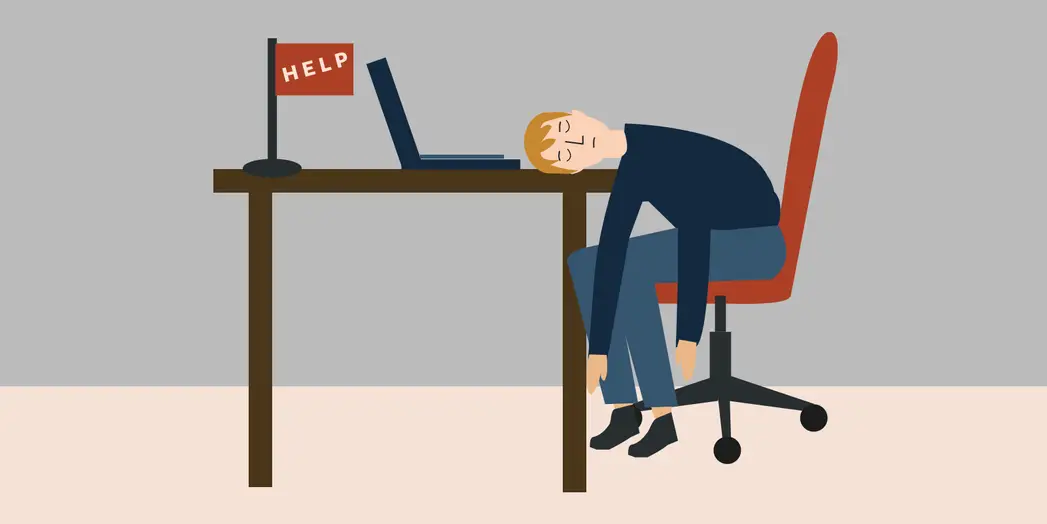
Napping can also be great for your mental health. A study has shown that in people with major depression a daytime nap can lead to major improvement in wellbeing.9
But just as your sleep needs change as you age, can the same be said when it comes to napping? Let’s take a look now.
Napping at different ages
Napping in babies, infants and young children is a natural part of their day (and a much welcome break for sleep-deprived parents). This is because sleep is vital for their social, emotional and brain development.10 11
Most children tend to drop a regular daytime nap by the time they’re 5–6 years old but taking a nap might once again become a regular part of their routine once they hit adolescence.
Teenagers need more sleep than adults but the demands of school and a busy, ‘always on’ lifestyle can mean that they rarely get the sleep they need, especially during the week.
This means that if you have a teen in the house, you may notice them wanting to take a nap, particularly at weekends in order to try and catch up on the sleep they’ve missed out on during the week. If you want to encourage your teen to develop a healthier sleep routine, It’s probably best for them to have power naps during the week and, although not ideal, a longer nap at the weekends if needed.
Is it normal for adults to nap every day?
As mentioned at the beginning of this article, napping every now again when you’re feeling low on sleep is perfectly normal.
But is napping every day bad? If you’re relying on a nap to get you through every day then there could be something bigger at play.
For an adult, if you are getting enough sleep during the night, there should be no need to nap during the day. The only real exception to this is if you’re ill. In this case, your body actually needs as much sleep as it can get to repair and recover.
That said, having a nap during the day is common and even a cultural norm in some countries. This is known as the siesta and we’ll take a look at it in more detail later.
Napping in the elderly
Have you ever heard of a “nana nap” before? This term comes from the short, and often unplanned, naps that an elderly person has during the afternoon.
But why is it so common for older people to nap?
As your body gets older, your circadian rhythm and sleep patterns naturally change, making it harder for you to get a good night’s sleep. Not only this, underlying illnesses and ailments can also make it harder to fall asleep or get back to sleep if you wake in the night.
So a lot of elderly people take afternoon naps to catch up on the sleep they’ve lost from the night before (replacement napping). Sometimes the nap can come from boredom or even enjoyment (appetitive napping). We’ll explain the difference between these types of naps in more detail later.
But while at the time a nap can seem like a great idea to catch up on sleep, if you’re regularly taking long afternoon naps, it can create a vicious cycle and leave you unable to fall asleep at night. You should experiment for a few weeks with not napping to see how that helps your overall sleep. If it works for you, that’s great! But if not, then you may find that naps actually work well for you and your lifestyle.
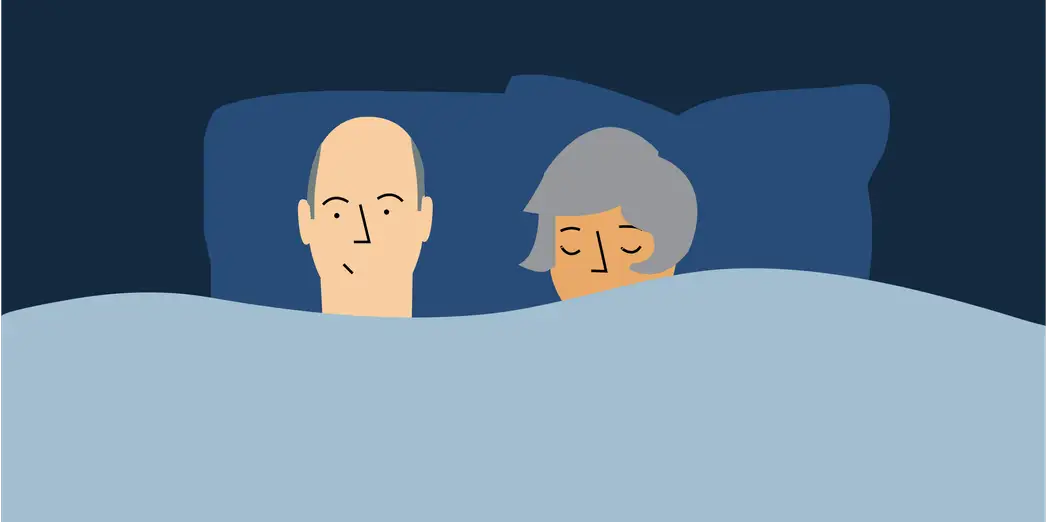
What are the drawbacks of napping?
Not getting enough sleep at night can leave you feeling slow and sluggish the following day. It might seem like common sense to try and catch up on your lost sleep with a quick afternoon nap, but in fact this may do more harm than good.
But before we jump into that, you first of all need to understand what sleep pressure is. When you’ve been awake for a long time, your pressure to sleep increases and tells you it’s time to sleep. And as you sleep, this pressure will drop, leaving you feeling energised and alert upon waking.
So how does napping affect sleep pressure?
This depends on the length of your nap. A quick nap of 20 minutes won’t affect sleep pressure. But a longer nap of 30–60 minutes will lead to a drop in your sleep pressure. You might feel a boost in energy once you’ve napped and have more energy for the rest of your day. By the time you try and sleep at your usual bedtime, you might not have built up enough sleep pressure to allow you to drift off. You’ll end up lying awake, worrying about why you’re not sleeping — which in turn will harm your ability to sleep.
And things can get even more complicated when you start thinking about when you take your nap too. A nap of 60 minutes earlier in the day will have less effect than a shorter, 30 minute nap closer to bedtime.
If you’d rather play it safe and avoid this vicious cycle, you should limit your napping where you can. But if you do decide to take a nap, there are things you can do to stop it affecting your nighttime slumber.
So is napping bad for you?
As a whole, napping is widely considered to be harmless. But one large study has led to some controversy on whether napping could actually be bad for your health.
The study showed a link between daytime napping and an increased risk of high blood pressure and stroke. But it’s important to note that this study only recorded how often the study participants took a nap, and not how long they napped for.12
Another study showed that regularly taking a siesta lowers the risk of dying from heart disease.13 With clearly different results from different studies, more research needs to be done to say whether there’s a certain link between napping and poor heart health.
How long should a nap be?
We all sleep in cycles. Throughout the cycles we go through different stages of sleep, N1, N2, N3 and then REM sleep. The secret to having the perfect nap lies in understanding these stages and what happens during each of them. When you fall asleep, you start off in N1 then quickly move to N2 and then N3. N3 is your deepest sleep stage. It’s involved in restoring your body, promoting muscle and tissue growth and cell repair.14 It takes you around 20 minutes to reach this deep sleep, which then lasts anywhere between 20 and 40 minutes.
This means that if you nap for longer than 20 minutes, there’s a good chance you’ll wake up during your deep stage N3 sleep. Waking up during this deep sleep can actually leave you feeling worse than you did before you napped.14
If you want to make sure you feel refreshed after a nap, you need to keep it short, sleeping for around 20 minutes. This should stop you from entering deep sleep and waking up feeling groggy. Another option is to sleep long enough — around two hours — so that you wake up after the first period of deep sleep.
Anything in between that will likely leave you waking up feeling slow and groggy. This phenomenon is called sleep inertia. Sleep inertia is the feeling of grogginess and disorientation that you feel after waking up from a deep sleep. It can last between a few minutes and several hours.15
If you’re extremely sleepy, then sticking to these nap lengths still might not help you feel much better. This is because the more sleep deprived you are, the quicker you’ll enter this deep sleep. So if you’re feeling extremely short on sleep, taking even a quick nap may leave you feeling disorientated when you wake up.16
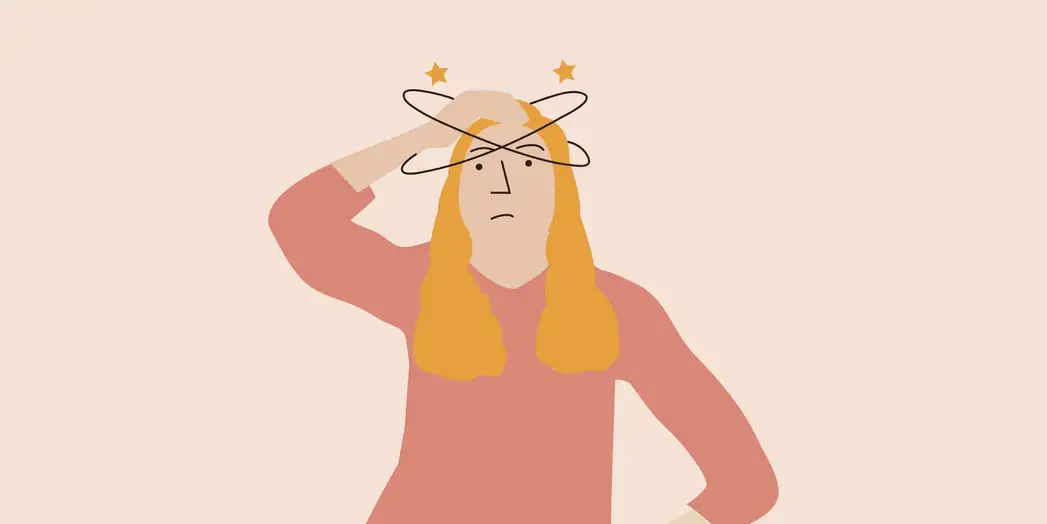
Are there different types of naps?
When snatching forty winks you might say you’re taking a quick power nap, cat nap or micro nap but is there actually a difference between them? And what’s the difference between naps and a siesta? Let’s dive into the different types of daytime sleeps, how they differ and how they can impact your sleep once night rolls around.
What is a power nap?
You’re probably familiar with the term ‘power nap’. These are those short naps we mentioned before that last less than 20 minutes.17
Fitting a quick power nap into your daily routine can have a lot of benefits. If you’re feeling a little sluggish and lacking in energy, taking a break and having a swift power nap could help:
- restore your brain function
- reduce fatigue.
While the idea of a power nap during the workday isn’t fully normalised everywhere, including the UK and US, it can have its benefits for workplace productivity. Short naps have been shown to improve creativity, memory, performance and alertness.7 This increase in alertness can last for up to several hours — longer than the boost you would get from drinking a cup of coffee.
And with the increase in the number of people working from home, there is more flexibility around napping on your lunch break.
If you want to add a power nap into your daily routine, you should schedule in a bit of extra time than you plan to nap for. So if you’re looking to nap for the ideal time of 20 minutes, try to find around 30 to 40 minutes to allow yourself time to fall asleep.
What are cat naps?
If you share your home with a cat, you’ll probably be very familiar with finding them in a cosy spot, enjoying a daytime snooze. If you know a particularly lazy feline, it’ll come as no surprise that their habits led to this phrase becoming a common way to describe a quick nap.
Simply, a cat nap is just another name for a power nap. The phrase has been around for a long time (as early as 1823) and was named after the short, light sleeps that cats are known for taking.
Micro naps
Though not a term used in sleep science, a micro nap is quite a commonly used phrase that pretty much does what it says on the tin. It’s a very short nap that usually lasts between 2-5 minutes.18
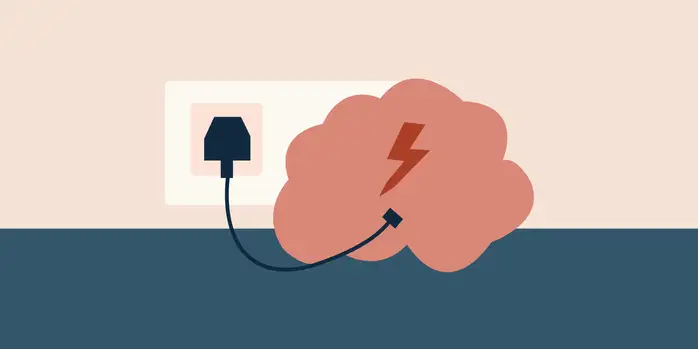
Can naps replace sleeping?
Nothing beats getting a full night’s quality sleep. But when that’s not always possible, there are ways that napping can help you get the sleep you need to get through the day. Let’s explore the different types of naps and how they can be used to your advantage.
Prophylactic napping
This type of nap is taken in anticipation of future sleep loss. They can be handy if you’re a shift worker and want to stay alert when working overnight.
Prophylactic naps are longer than your typical power nap and usually last a few hours.19 As these naps are long, they allow the brain to move into deeper sleep stages and so have longer-lasting benefits than a shorter nap. One study has shown prophylactic naps to be more effective for improving performance than caffeine.20
Replacement napping
A replacement nap is taken to replace sleep lost the night before. While naps can’t make up for the effects of sleep deprivation, they can ease the symptoms and leave you able to function better than if you hadn’t napped at all.
Appetitive napping
This is a type of nap that isn’t taken to feel more awake or alert — it’s taken for enjoyment. A good example of this is a mid-afternoon nap that an elderly person might take in front of the TV. Rather than a need for catching up on sleep, it’s done simply because it’s a nice thing to do.
Is a siesta different to a nap?
Siestas are a traditional practice in many places around the world, though most commonly in hot, tropical areas. While most people nap without wanting to impact their nighttime sleep, siestas usually count towards your total amount of sleep for the whole day.
In areas where siestas are common, like southern Spain, you’ll probably notice that routines and daily life have adapted in line with this. You’ll see that shops stay open later, people tend to have their evening meal later and often go to bed later too.
But if you live in the UK, US or another country where the day doesn’t stop while you catch forty winks, you might be wondering if there’s an ideal time you should aim to get a quick snooze in without impacting the rest of your days and nights and we’ll explore that now.
Naps and shift work
If you frequently have shift work, you might know just how much it can cause havoc with your sleeping pattern. Our body’s internal clock means that we naturally feel awake during the day and sleepy at night. But when you work shifts, it can throw your circadian rhythm out of sync.
Your circadian rhythm means the natural changes in your bodily processes over a 24 hour period and include your sleep-wake cycle. Your circadian rhythm rises and falls over 24 hours, meaning that you’ll feel more awake and more sleepy at different points of the day and this won’t necessarily be in line with the hours that you need to be most alert for work.
Lack of quality sleep not only affects your mental and physical health but it can have a negative, and often dangerous impact on your work too. Studies show it can lead to increased accidents, mistakes and injuries in the workplace.21
While napping can improve performance, mood and alertness, they shouldn’t be a regular part of your regular sleep strategy if you’re a shift worker.6 The only exception to this is the use of a prophylactic nap in the afternoon or evening before the first night shift.
Unless you’re on a rapidly rotating shift pattern it’s best to avoid napping during your night shift break. This is because it’ll confuse your circadian rhythm into thinking you should be sleeping at night and you might also experience sleep inertia — that feeling of grogginess you sometimes feel when waking up from a nap that we mentioned earlier.
If you feel too sleepy to drive home safely once you’ve finished work, it might be wise to try and take a nap before setting off home in order to keep you and others safe from the dangers of drowsy driving.
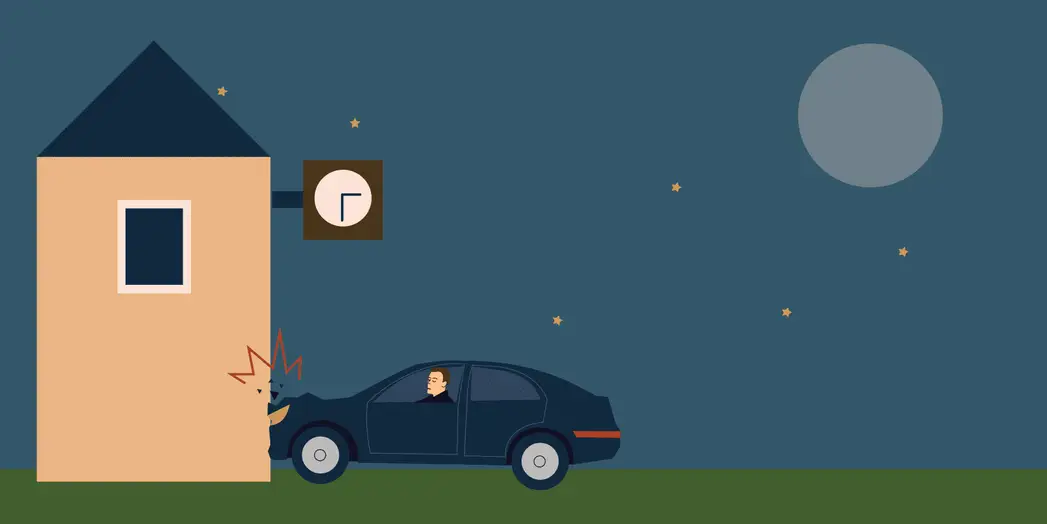
What’s the best time of day for a nap?
As we’ve mentioned earlier, the time of day you have your nap is crucial. To better understand why this is, we need to take a further look at your circadian rhythm.
While your circadian rhythm is unique to you, most people will experience a feeling of sleepiness in the early afternoon — the “post-lunch dip”. Despite its name, the “post-lunch dip” relates to the time of day it happens and you can feel this slump whether you’ve eaten or not.
You should choose to nap in line with your circadian rhythm and when you’re feeling the least alert. For most people, this is between 1:00–3:00pm. This will mean it’s a lot easier for you to nod off and you could benefit from a boost in alertness and productivity for the rest of your day.
While for a lot of people, the early afternoon is the best time of day for a nap, this might not be the case for you. You’ll need to take into account your daily schedule and work commitments, as well as your body’s unique circadian rhythm. You should experiment with napping at different times of the day to see what time leaves you feeling at your best.
And it’s not just trying out different times that can have an impact on how much benefit your nap will bring. Let’s take a look at some other ways of making the most of your nap time.
Tips to take the best nap
Have you ever decided to take a much-needed nap but no matter what, you just can’t fall asleep? Do you look around you and envy those people who seem to be able to fall asleep just about anywhere?
Sometimes taking a nap can be easier said than done and it’s easy to feel frustrated if, for example, you’re trying to nap during your work break and the time is ticking down till you need to get back to work.
That’s why we’ve given you our top three napping tips to help you make sure the time you’ve set aside for your nap isn’t wasted.
- Find somewhere comfortable and dark If you find it tricky to drift off in the first place, trying to find a spot that is quiet, dark and comfortable will give you the best chance of making the most of your nap. Some people find it easy enough to fall asleep sitting up but others need to be lying down. What you find comfortable is individual to you, so you might need to try out a few different spots, especially if you’re trying to nap during a shift.
- Minimise disruptions Nobody likes to be woken up mid-slumber, especially when your time frame is limited so try and reduce the chance of any disruptions. Put your phone on “do not disturb” or let your partner or work colleagues know you’re having a nap so they don’t accidentally wake you up. If you’re in a noisy environment, you might want to try out some earplugs to help you get to sleep and stay asleep for your desired amount of time.
- Set an alarm As we’ve already said, keeping your nap to the right length is vital for feeling your best when you wake. Set an alarm to make sure you’re not napping for too long and waking up groggy and disorientated. This is also a handy trick if you’re napping on your work break so that you don’t oversleep into your shift! If you’re aiming for a power nap, set your alarm for around 35–40 minutes as you need to build in the time it takes for you to fall asleep. If you find you’re waking up and feeling groggy, try reducing your alarm by five minutes. You may need to experiment with this a little as you may fall asleep quicker if you’re sleep deprived. If you’re wanting to have a longer nap of around two hours or so, it’s still worth setting an alarm to avoid any sleep inertia. This is because the ideal amount of nap time is individual to you and won’t be precisely two hours. You might find that an hour and 45 minutes is the perfect amount of time, or you might find that you need a little over two hours to feel your best. This might take some trial and error before you find the ideal time for you using your alarm can help you figure out your optimum nap time and stick to it.
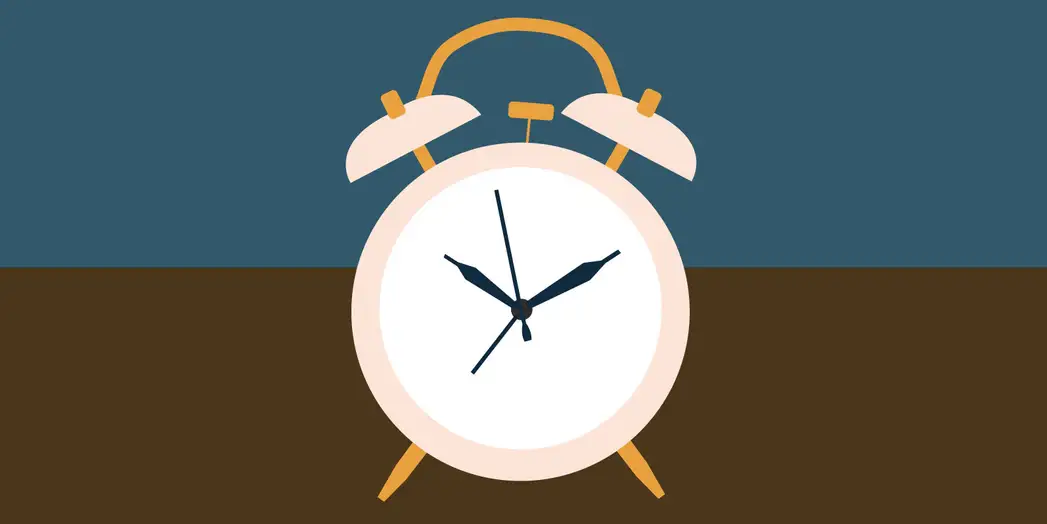
How to stop napping
Napping after having one bad night’s sleep isn’t an issue. But if you’re regularly having sleeping problems, it’s best to avoid trying to catch up on your sleep by taking a longer sleep in the afternoon. By doing so, it’ll be easier for you to get your normal sleep pattern back on track.
While at first it’ll be difficult to resist the pull of a midday slumber, soon you’ll be getting quality sleep every night and you won’t need to rely on a nap during the day.
Other things you can do include:
- avoiding caffeine close to your bedtime
- staying active during the day
- following a balanced diet to stay energised.
By avoiding napping where you can and trying to stick to a consistent sleep pattern, you’re much more likely get a good night’s sleep and stay energised throughout the day, without the need for a sleep during daylight hours.
But stopping longer naps doesn’t always guarantee that you’ll gain more sleep during the night. Like we said, everybody is different. If you find that after a few weeks of not napping you haven’t seen any good changes in your nighttime sleep, then you may find that naps actually work well for you and your lifestyle.
The advice and tips in this article should help you to have the perfect nap that leaves you feeling energised without disrupting your normal sleep schedule. But if you’re somebody who often feels sleep deprived and relies on a daily nap just to get through your day, there might be something bigger at play and Sleepstation can help.
Is napping stopping you from getting the sleep you need?
Regularly napping, having trouble falling asleep or feeling sleepy most of the day could be signs of a sleeping problem. But thankfully sleeping problems like insomnia respond extremely well to treatment.
Our clinically-validated Sleep Transformation Programme has helped thousands of people just like you to get better sleep. We combine a type of talking therapy called Cognitive Behavioural Therapy for insomnia (CBTi), the gold standard treatment for insomnia, with real human support, giving you the best chance of taking back control of your sleep for good.
We’ll help you get to the underlying root of your sleep problem and then create a personalised sleep plan to get your sleep back on track.
You’ll be able to draw on the expertise of our highly-trained sleep coaches, experts and clinicians to learn scientifically-proven sleep techniques like sleep restriction, thought blocking and sleep hygiene. Unlike sleeping pills, our programme gives you long-lasting results to help you get the effortless sleep you deserve.
So why not try our sleep questionnaire today to see how we can help you achieve better sleep for good?
Summary
Napping can certainly have its benefits — from making you more alert and productive to improving your memory and problem-solving skills.6 But if you’re taking regular naps and having trouble sleeping when it comes to bedtime, it might be time to rethink your napping routine.
- A nap is a short sleep that’s taken outside of your normal sleep time.
- Napping can have a number of benefits for both your physical and mental wellbeing.
- Short 20 minute naps are ideal if you don’t want to feel groggy when you wake up.
- Regularly napping can stop you from getting a good night’s sleep.
- If napping is affecting your sleep, Sleepstation can help you turn your sleep pattern around once and for all.
References
- Dashti HS, Daghlas I, Lane JM, Huang Y, Udler MS, Wang H, et al. Genetic determinants of daytime napping and effects on cardiometabolic health. Nat Commun. 2021; 12: 1–15. ↩︎
- Besedovsky L, Lange T, Born J. Sleep and immune function. Pflugers Arch. 2012; 463: 121–37. ↩︎
- Javaheri S, Redline S. Insomnia and risk of cardiovascular disease. Chest. 2017; 152: 435–44. ↩︎
- Triantafillou S, Saeb S, Lattie EG, Mohr DC, Kording KP. Relationship between sleep quality and mood: Ecological momentary assessment study. JMIR Ment Health. 2019; 6: e12613. ↩︎
- Ma Y, Liang L, Zheng F, Shi L, Zhong B, Xie W. Association between sleep duration and cognitive decline. JAMA Netw Open. 2020; 3: e2013573. ↩︎
- Lovato N, Lack L. The effects of napping on cognitive functioning. In: Progress in Brain Research [Internet]. Elsevier; 2010. ↩︎
- Dutheil F, Danini B, Bagheri R, Fantini ML, Pereira B, Moustafa F et al. Effects of a short daytime nap on the cognitive performance: A systematic review and meta-analysis. Int J Environ Res Public Health 2021; 18: 10212. ↩︎
- ↩︎
- Peth J, Regen F, Bajbouj M, Heuser I, Anghelescu I, Hornung OP. The influence of daytime napping versus controlled activity on the subjective well-being of patients with major depression. Psychiatry Res. 2012; 200: 368–73. ↩︎
- Matricciani L, Blunden S, Rigney G, Williams MT, Olds TS. Children’s sleep needs: Is there sufficient evidence to recommend optimal sleep for children? Sleep 2013; 36: 527–534. ↩︎
- Bathory E, Tomopoulos S. Sleep regulation, physiology and development, sleep duration and patterns, and sleep hygiene in infants, toddlers, and preschool-age children. Curr Probl Pediatr Adolesc Health Care 2017; 47: 29–42. ↩︎
- Yang M-J, Zhang Z, Wang Y-J, Li J-C, Guo Q-L, Chen X, et al. Association of nap frequency with hypertension or ischemic stroke supported by prospective cohort data and Mendelian randomization in predominantly middle-aged European subjects. Hypertension. 2022; 79: 1962–70. ↩︎
- Naska A. Siesta in healthy adults and coronary mortality in the general population. Arch Intern Med. 2007; 167: 296. ↩︎
- Patel AK, Reddy V, Shumway KR, Araujo JF. Physiology, Sleep Stages. In: StatPearls [Internet]. StatPearls Publishing; 2022. ↩︎
- Trotti LM. Waking up is the hardest thing I do all day: Sleep inertia and sleep drunkenness. Sleep Med Rev. 2017; 35: 76–84. ↩︎
- Hilditch CJ, McHill AW. Sleep inertia: current insights. Nat Sci Sleep. 2019; 11: 155–65. ↩︎
- Pilcher JJ, Michalowski KR, Carrigan RD. The prevalence of daytime napping and its relationship to nighttime sleep. Behav Med 2001; 27: 71–76. ↩︎
- Patra M. It’s Siesta Time! Science Reporter 2012: 44-45. ↩︎
- Centers for Disease Control and Prevention. NIOSH Training for Nurses on Shift Work and Long Work Hours. Module 7 [Internet]. 2020 [cited 2023 Nov 22]. Available here. ↩︎
- Bonnet MH, Gomez S, Wirth O, Arand DL. The use of caffeine versus prophylactic naps in sustained performance. Sleep 1995; 18: 97–104. ↩︎
- Brossoit RM, Crain TL, Leslie JJ, Hammer LB, Truxillo DM, Bodner TE. The effects of sleep on workplace cognitive failure and safety. J Occup Health Psychol 2019; 24: 411–422. ↩︎
